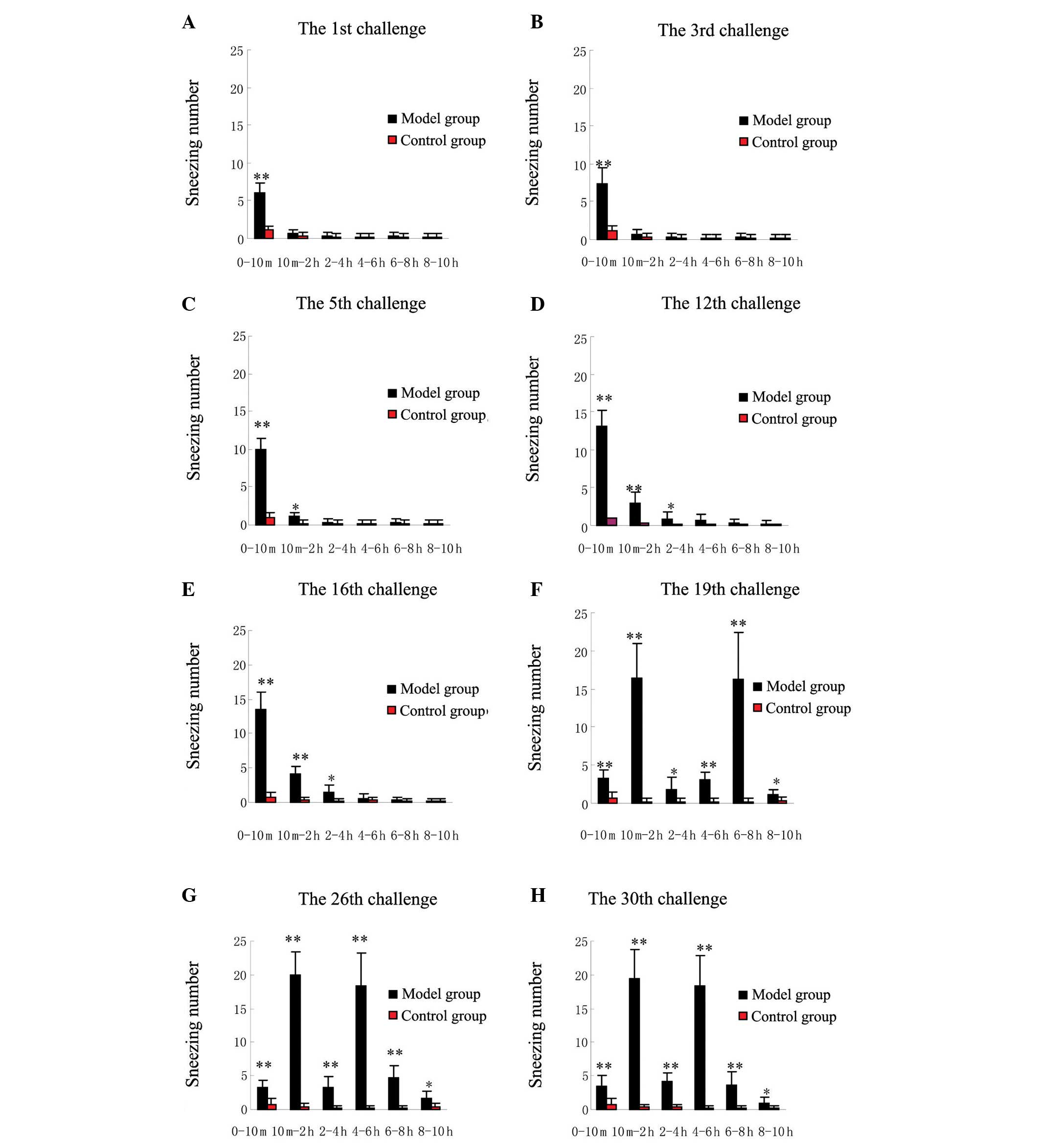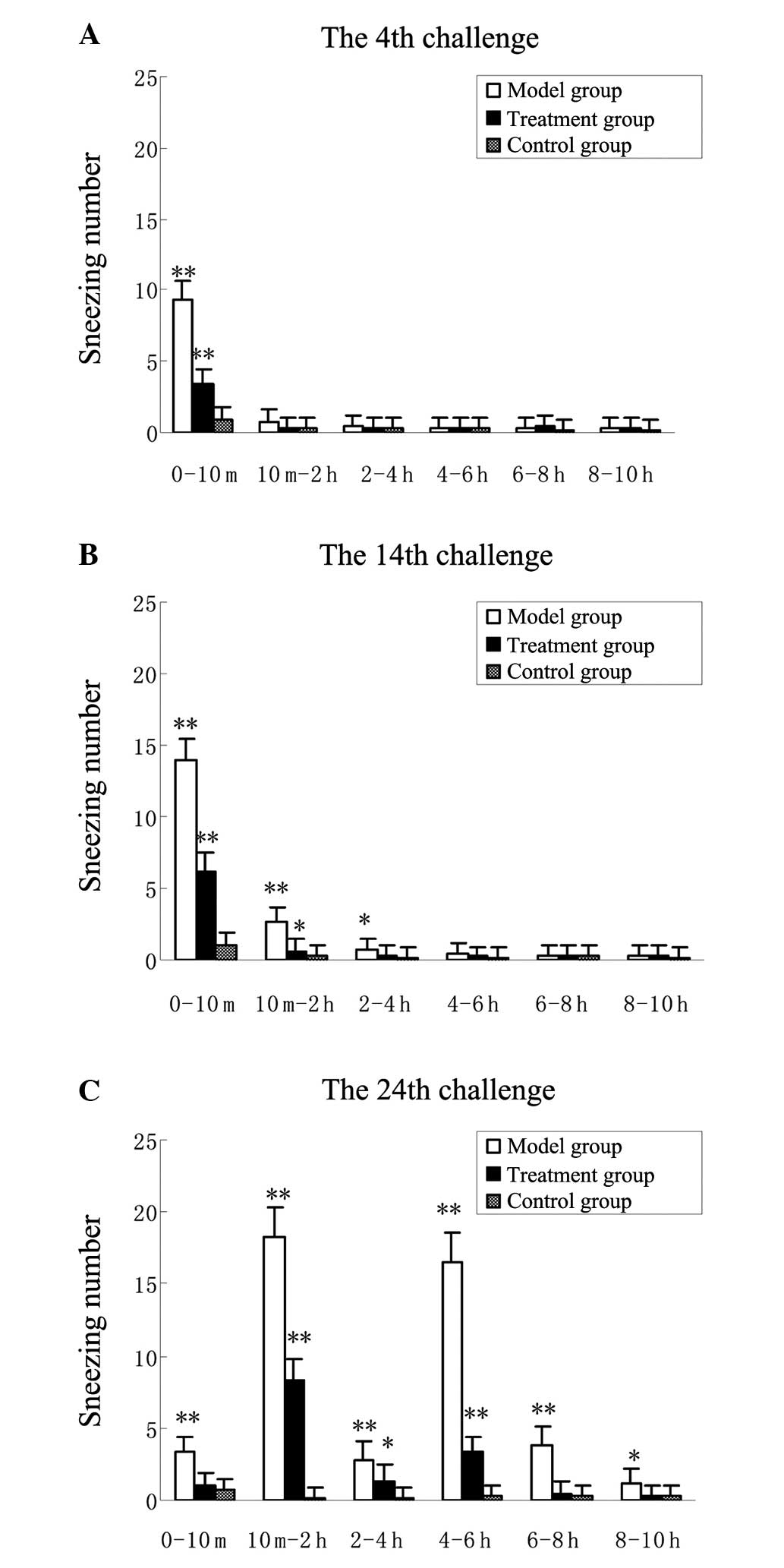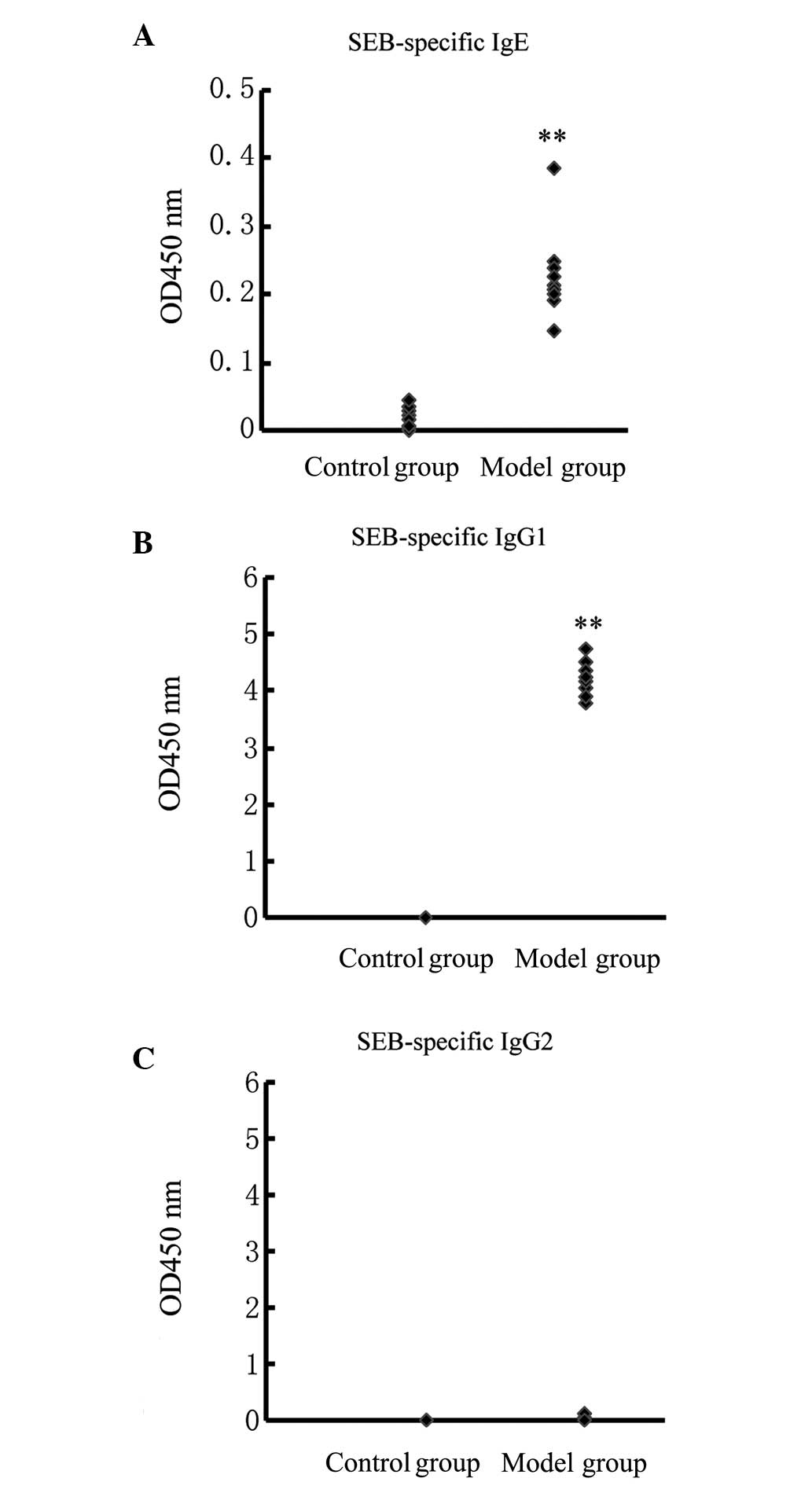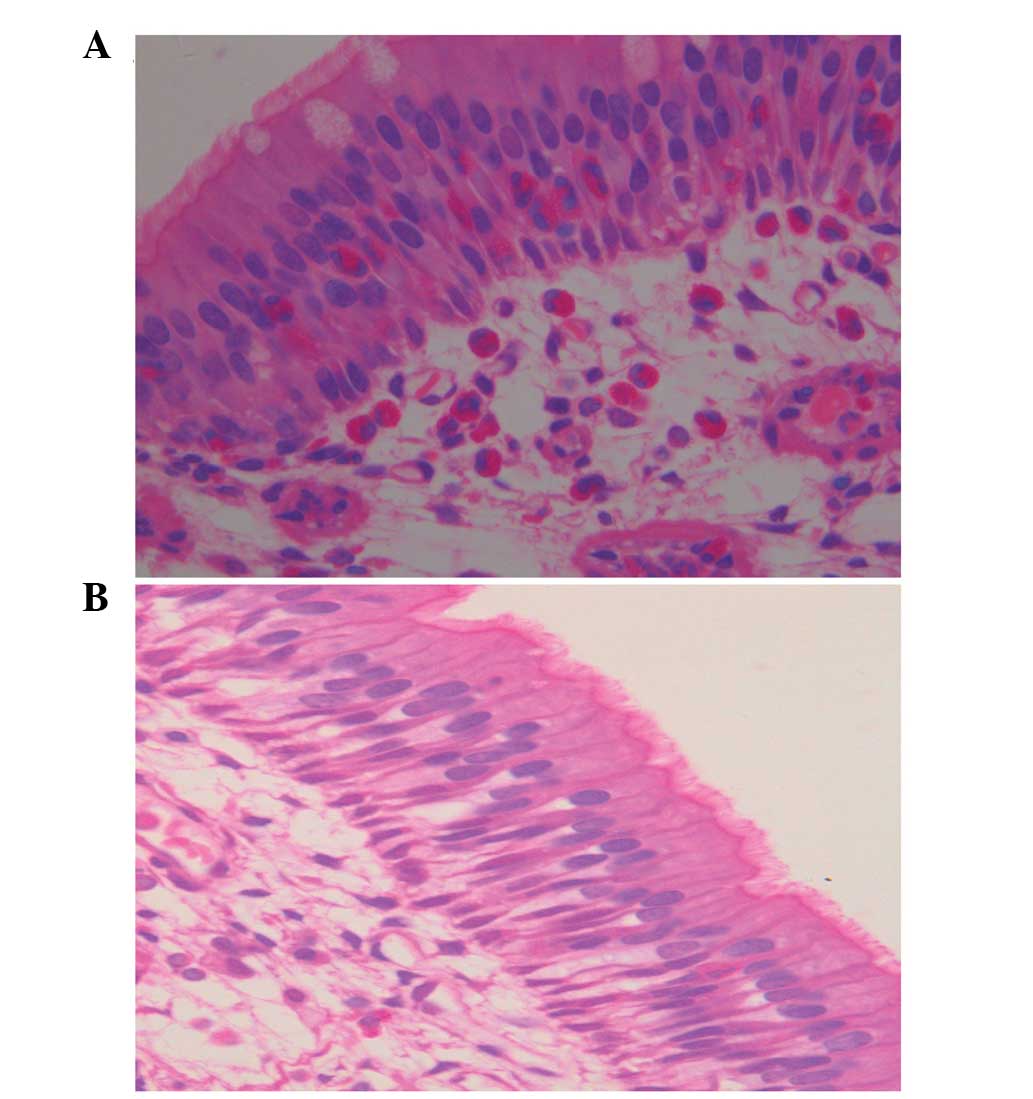|
1
|
Meltzer EO: The pharmacological basis for
the treatment of perennial allergic rhinitis and non-allergic
rhinitis with topical corticosteroids. Allergy. 52 (Suppl):33–40.
1997. View Article : Google Scholar : PubMed/NCBI
|
|
2
|
Niedoszytko M, Chełmińska M, Chełmiński K,
et al: Late-phase allergic reaction in nasal provocation with
fungal allergens. Allergy Asthma Proc. 29:35–39. 2008. View Article : Google Scholar : PubMed/NCBI
|
|
3
|
de Graaf-in't Veld C, Garrelds IM, van
Toorenenbergen AW and Gerth van Wijk R: Nasal responsiveness to
allergen and histamine in patients with perennial rhinitis with and
without a late phase response. Thorax. 52:143–148. 1997. View Article : Google Scholar : PubMed/NCBI
|
|
4
|
Wang D and Clement P: Assessment of early-
and late-phase nasal obstruction in atopic patients after nasal
allergen challenge. Clin Otolaryngol Allied Sci. 20:368–373. 1995.
View Article : Google Scholar : PubMed/NCBI
|
|
5
|
Jordan TR, Rasp G, Pfrogner E and Kramer
MF: An approach of immunoneurological aspects in nasal allergic
late phase. Allergy Asthma Proc. 26:382–390. 2005.PubMed/NCBI
|
|
6
|
Wagenmann M, Schumacher L and Bachert C:
The time course of the bilateral release of cytokines and mediators
after unilateral nasal allergen challenge. Allergy. 60:1132–1138.
2005. View Article : Google Scholar : PubMed/NCBI
|
|
7
|
Oldenbeuving NB, KleinJan A, Mulder PG, et
al: Evaluation of an intranasal house dust mite provocation model
as a tool in clinical research. Allergy. 60:751–759. 2005.
View Article : Google Scholar : PubMed/NCBI
|
|
8
|
Bousquet J, Chanez P and Michel FB:
Pathophysiology and treatment of seasonal allergic rhinitis. Respir
Med. 84 (Suppl A):11–17. 1990. View Article : Google Scholar : PubMed/NCBI
|
|
9
|
Naclerio RM: Pathophysiology of perennial
allergic rhinitis. Allergy. 52 (Suppl):7–13. 1997. View Article : Google Scholar : PubMed/NCBI
|
|
10
|
Nabe T, Mizutani N, Shimizu K, et al:
Development of pollen-induced allergic rhinitis with early and late
phase nasal blockage in guinea pigs. Inflamm Res. 47:369–374. 1998.
View Article : Google Scholar : PubMed/NCBI
|
|
11
|
Zhao Y, van Hasselt CA, Woo KS, et al:
Establishment of a modified intranasally ovalbumin induced animal
model of allergic rhinitis. Zhonghua Er Bi Yan Hou Tou Jing Wai Ke
Za Zhi. 40:176–180. 2005.(In Chinese). PubMed/NCBI
|
|
12
|
Tang X, Sun R, Hong S, et al: Repeated
intranasal instillation with staphylococcal enterotoxin B induces
nasal allergic inflammation in guinea pigs. Am J Rhinol Allergy.
25:176–181. 2011. View Article : Google Scholar : PubMed/NCBI
|
|
13
|
Breuer K, Haussler S, Kapp A and Werfel T:
Staphylococcus aureus: colonizing features and influence of
an antibacterial treatment in adults with atopic dermatitis. Br J
Dermatol. 147:55–61. 2002. View Article : Google Scholar : PubMed/NCBI
|
|
14
|
Chambers HF: The changing epidemiology of
Staphylococcus aureus? Emerg Infect Dis. 7:178–182. 2001.
View Article : Google Scholar : PubMed/NCBI
|
|
15
|
Becker K, Friedrich AW, Lubritz G, et al:
Prevalence of genes encoding pyrogenic toxin superantigens and
exfoliative toxins among strains of Staphylococcus aureus
isolated from blood and nasal specimens. J Clin Microbiol.
41:1434–1439. 2003. View Article : Google Scholar : PubMed/NCBI
|
|
16
|
Sakairi T, Suzuki K, Makita S, et al:
Effects of fexofenadine hydrochloride in a guinea pig model of
antigen-induced rhinitis. Pharmacology. 75:76–86. 2005. View Article : Google Scholar : PubMed/NCBI
|
|
17
|
Avincsal MO, Ozbal S, Ikiz AO, Pekcetin C
and Güneri EA: Effects of topical intranasal doxycycline treatment
in the rat allergic rhinitis model. Clin Exp Otorhinolaryngol.
7:106–111. 2014. View Article : Google Scholar : PubMed/NCBI
|
|
18
|
Underwood DC, Osborn RR and Hand JM: Lack
of late-phase airway responses in conscious guinea pigs after a
variety of antigen challenges. Agents Actions. 37:191–194. 1992.
View Article : Google Scholar : PubMed/NCBI
|
|
19
|
Zhao XJ: Experimental models of nasal
hypersensitive reaction. Zhonghua Er Bi Yan Hou Ke Za Zhi.
28:17-8–58-9. 1993.(In Chinese).
|
|
20
|
Okano M, Nishizaki K, Abe M, et al:
Strain-dependent induction of allergic rhinitis without adjuvant in
mice. Allergy. 54:593–601. 1999. View Article : Google Scholar : PubMed/NCBI
|
|
21
|
van de Rijn M, Mehlhop PD, Judkins A, et
al: A murine model of allergic rhinitis: studies on the role of IgE
in pathogenesis and analysis of the eosinophil influx elicited by
allergen and eotaxin. J Allergy Clin Immunol. 102:65–74. 1998.
View Article : Google Scholar : PubMed/NCBI
|
|
22
|
Wang LF, Xu LJ, Guo FH, et al: Effect of
antiallergic herbal agents on chloride channel-3 and immune
microenvironment in nasal mucosal epithelia of allergic rhinitis
rabbits. Chin Med J (Engl). 123:1034–1038. 2010.PubMed/NCBI
|
|
23
|
Tsunematsu M, Yamaji T, Kozutsumi D, et
al: A new murine model of allergic rhinitis by repeated intranasal
Cry j 1 challenge. Biomed Res. 29:119–123. 2008. View Article : Google Scholar : PubMed/NCBI
|
|
24
|
Zhao Y, Woo JK, Leung PC, et al:
Symptomatic and pathophysiological observations in a modified
animal model of allergic rhinitis. Rhinology. 43:47–54.
2005.PubMed/NCBI
|
|
25
|
Lei F, Zhu D, Sun J and Dong Z: Effects of
minimal persistent inflammation on nasal mucosa of experimental
allergic rhinitis. Am J Rhinol Allergy. 24:e23–e28. 2010.
View Article : Google Scholar : PubMed/NCBI
|
|
26
|
Yamasaki M, Mizutani N, Sasaki K, et al:
Involvement of thromboxane A2 and peptide leukotrienes in early and
late phase nasal blockage in a guinea pig model of allergic
rhinitis. Inflamm Res. 50:466–473. 2001. View Article : Google Scholar : PubMed/NCBI
|
|
27
|
Brozmanova M, Bartos V, Plank L and Tatar
M: Experimental allergic rhinitis-related cough and airway
eosinophilia in sensitized guinea pigs. J Physiol Pharmacol. 58
(Suppl 5):57–65. 2007.PubMed/NCBI
|
|
28
|
Nabe T, Kubota K, Mizutani N, et al:
Effect of local nasal immunotherapy on nasal blockage in
pollen-induced allergic rhinitis of Guinea pigs. Allergol Int.
57:419–427. 2008. View Article : Google Scholar : PubMed/NCBI
|
|
29
|
Grønborg H, Bisgaard H, Rømeling F and
Mygind N: Early and late nasal symptom response to allergen
challenge. The effect of pretreatment with a glucocorticosteroid
spray. Allergy. 48:87–93. 1993. View Article : Google Scholar
|
|
30
|
Doyle WJ, Boehm S and Skoner DP:
Physiologic responses to intranasal dose-response challenges with
histamine, methacholine, bradykinin, and prostaglandin in adult
volunteers with and without nasal allergy. J Allergy Clin Immunol.
86:924–935. 1990. View Article : Google Scholar : PubMed/NCBI
|
|
31
|
Svensson C, Baumgarten CR, Pipkorn U, et
al: Reversibility and reproducibility of histamine induced plasma
leakage in nasal airways. Thorax. 44:13–18. 1989. View Article : Google Scholar : PubMed/NCBI
|
|
32
|
White MV and Kaliner MA: Mediators of
allergic rhinitis. J Allergy Clin Immunol. 90:699–704. 1992.
View Article : Google Scholar : PubMed/NCBI
|
|
33
|
Schleimer RP, Fox CC, Naclerio RM, et al:
Role of human basophils and mast cells in the pathogenesis of
allergic diseases. J Allergy Clin Immunol. 76:369–374. 1985.
View Article : Google Scholar : PubMed/NCBI
|
|
34
|
Horak F: Clinical advantages of dual
activity in allergic rhinitis. Allergy. 55 (Suppl 64):34–39. 2000.
View Article : Google Scholar : PubMed/NCBI
|
|
35
|
Montoro J, Sastre J, Jáuregui I, et al:
Allergic rhinitis: continuous or on demand antihistamine therapy? J
Investig Allergol Clin Immunol 17 Suppl. 2:21–27. 2007.
|
|
36
|
Pietrzkowicz M and Grzelewska-Rzymowska I:
Histamine as a mediator of allergic inflammation. Pol Merkur
Lekarski. 6:232–235. 1999.(In Polish). PubMed/NCBI
|
|
37
|
Pawankar R, Yamagishi S and Yagi T:
Revisiting the roles of mast cells in allergic rhinitis and its
relation to local IgE synthesis. Am J Rhinol. 14:309–317. 2000.
View Article : Google Scholar : PubMed/NCBI
|
|
38
|
Terada N, Hamano N, Hohki G, et al: Late
phase response in nasal mucosa closely correlated with immediate
phase reaction and hyperreactivity to histamine. Acta Otolaryngol.
118:392–397. 1998. View Article : Google Scholar : PubMed/NCBI
|
|
39
|
Imai N, Miyahara A, Yamazaki Y, et al:
Involvement of eosinophils in the early-phase allergic reaction in
a guinea pig rhinitis model. Int Arch Allergy Immunol. 122:270–278.
2000. View Article : Google Scholar : PubMed/NCBI
|
|
40
|
Milanese M, Ricca V, Canonica GW and
Ciprandi G: Eosinophils, specific hyperreactivity and occurrence of
late phase reaction in allergic rhinitis. Eur Ann Allergy Clin
Immunol. 37:7–10. 2005.PubMed/NCBI
|
|
41
|
Elovsson S, Smailagic A, Erjefalt I, et
al: Evaluation of nasal barrier dysfunction at acute- and
late-phase reactions in a guinea pig model of allergic rhinitis.
Vascul Pharmacol. 43:267–276. 2005. View Article : Google Scholar : PubMed/NCBI
|
|
42
|
Sedgwick JB, Calhoun WJ, Gleich GJ, et al:
Immediate and late airway response of allergic rhinitis patients to
segmental antigen challenge. Characterization of eosinophil and
mast cell mediators. Am Rev Respir Dis. 144:1274–1281. 1991.
View Article : Google Scholar : PubMed/NCBI
|



















